- Author Matthew Elmers [email protected].
- Public 2023-12-16 21:49.
- Last modified 2025-01-24 09:17.
The article is based on the Field Manual (FM3-34) of the US Army "Engineering Operations"
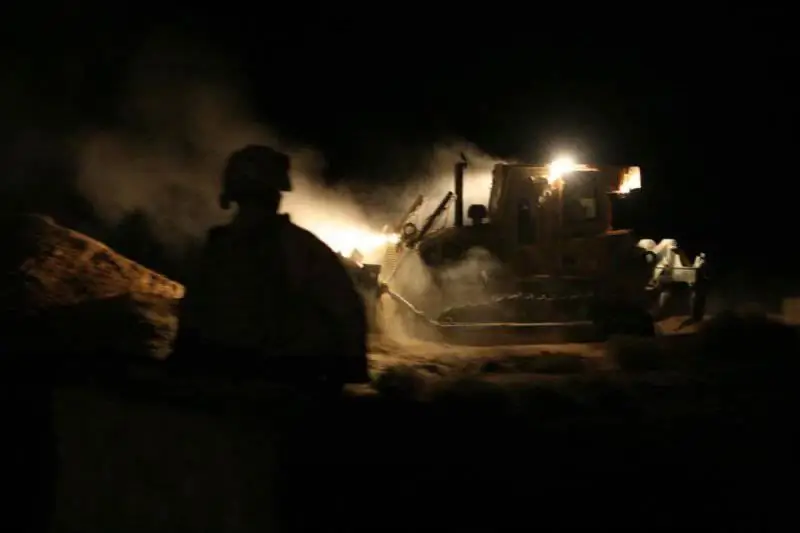
Marines from the 1st Engineer Battalion use a bulldozer to create a berm around a patrol base in Afghanistan's Gemland province. The unit arrived at the construction site at two o'clock in the morning and immediately proceeded to the arrangement
The Corps of Engineers enables combat commanders of combined units to achieve targets through strategic redeployment and tactical maneuver, providing unique combat, general and geospatial engineering capabilities
While the nature of warfare has remained constant throughout its history, the conduct of war is constantly changing in response to new concepts, technologies and needs. The engineering forces doctrine has evolved for over 200 years and continues to support the full spectrum of combat, emphasizing the simultaneous combination of offensive, defensive and stability operations during all hostilities. Increased attention also needs to be given to the role and function of engineering forces in multinational operations under potentially multinational or inter-agency command and in a variety of command relationships. It is invariable that engineering operations continue to rely on the engineer trooper to gain the necessary control and flexibility to integrate the capabilities of the engineering forces into combined arms operations.
Engineering capabilities are a significant factor in enhancing combat capabilities in joint operations, facilitating the freedom of action necessary to meet the objectives of a combat mission. Engineering operations modify, maintain, make sense and protect the physical space. Acting in a similar vein, they guarantee the mobility of the allied forces; change the mobility of the enemy; improve survivability and support allied forces; promote a better understanding of the physical environment; and provide support to civilians, other nations and civilian authorities and bodies.
The Corps of Engineers must contain the right mix of capabilities to provide timely and appropriate engineering support, and this mix will often need to be seriously changed during periods of transition. For example, sapper units often make up the majority of the theater of operations (theater of operations) engineering forces during prolonged combat operations, but they must be reorganized during stabilization operations, as they usually do not have the adequate capacity to carry out all the necessary routine engineering tasks. Also, due to the fact that the requirements for EOD support (Explosive Ordnance Disposal - disposal of unexploded ordnance, explosive ordnance) during transient operations are often significantly higher than during combat operations, more EOD capabilities are needed.
Notes on semantics (meaning of the word)
Combat Manual FM 3-34, on which this article is based, introduces some significant changes to a number of traditional concepts and expressions used to describe them. In particular, they include:
- Replacement of "combat working systems" with "combat functions" and the subsequent division of combat operational systems of mobility, countermobility and survivability between the combat functions "movement and maneuver" and "defense";
- The elimination of the term "combat space" and the subsequent replacement of the "function of engineering combat space" by simply "engineering functions" of combat, general and geospatial engineering;
- Exclusion of the term "force protection" except for the term "conditions for the protection of troops" (FPCON) as part of the anti-terrorist element of the combat function of protection;
- Formation of the term "guaranteed mobility" in order to designate the framework of the process, actions and capabilities with the active integration of engineering combat power;
- Elimination of the terms "combat", "combat support" and "support of troops in battle" when describing categories for troops, activities and capabilities.
This article explains new semantics, language, and a set of expressions that might sound somewhat unexpected to non-US military readers.
Engineering planning
The tasks of planning, preparing, executing and continually evaluating in different theaters are many and varied. The headquarters of the engineering troops must participate in operations at every level of combat operations: strategic, operational, tactical. The exclusion of engineering work at any level can adversely affect the efficiency of the operation.
Strategic level
Engineering activities at the strategic level include planning of forces and assets, mainly focusing on the assets and capabilities to create, establish, maintain and rebuild armed forces. In addition, infrastructure development is a critical aspect of deploying and sustaining force deployments and determines a greater need for engineering assets. The Corps of Engineers provide strategic advice on topography and infrastructure, including maritime and landing airports, troop formation, engineering support priorities, communications lines, airbase and airfield operations, base camp planning and deployment, joint targeting, foreign humanitarian aid, environmental considerations environment, the interaction of engineering forces, the introduction of rules for the conduct of combat, the rules for the use of troops and the provision of protection. Environmental issues can be of strategic importance and affect the success of a combat mission, and in addition, the protection of natural resources can be a key strategic task that is really important for the reconstruction of a country.
Operational level
Operational-level engineering focuses on the impact of geographic and troop deployment infrastructure on a combat commander's operational plans. The planning bodies of the engineering forces should determine the requirements for the command concept of combat regarding mobilization, deployment, employment and support. Operational planning combines the operational plan (OPLAN) or operational order (OPORD) of the combined forces, the assigned special engineering tasks and the available engineering forces to achieve success. Joint forces engineer planners also need to understand the capabilities and limitations of the engineering forces of each branch.
Most of the engineering activities conducted for strategic operations are also carried out at the operational level. The Corps of Engineers assess the combat area and environment and work with intelligence officers to analyze the threat. Engineers are planning and planning the construction of the necessary base camps and other structures, developing geospatial products and services, and making recommendations for joint fire and survivability of the forces involved. As a link to tactical engineering integration, operational planning ensures that adequate engineering capabilities are provided to meet combat engineering support requirements.
Tactical level
Engineering activities at the tactical level focus on the support, placement and maneuver of combat elements (in relation to each other and to the enemy) that are necessary to complete combat missions. Tactical planning is carried out by each branch of the military; in the context of engineering operations, this means a shift in the main focus to combat engineering tasks and planning within combat formations.
Operational planners determine the conditions for achieving results at the tactical level, assessing needs and ensuring that opportunities are available. Typically, tactical engineering planning focuses on combat maneuver support, survivability, and ongoing support that is not directed by a higher-level commander.
Construction planning at the tactical level will usually focus on building security to provide combat "protection" and "support" functions. Engineering planners at the tactical level use the engineering facilities provided by the operational planners to support the tactical combat missions assigned to the combat maneuvering units they support.
Tactical tasks are complex and planning should take into account the characteristics of symmetric and asymmetric threats. Special considerations include performing terrain analysis with an understanding of these threat characteristics. Engineering reconnaissance (tactical and technical) is a critical capability for a combat commander at the tactical level. The threat information must be very specific. The rise in the number of mines and improvised explosive devices (IEDs) requires engineers to constantly develop new countermeasures. The tactical integration of explosive ordnance disposal capabilities is becoming an increasingly imperative requirement.
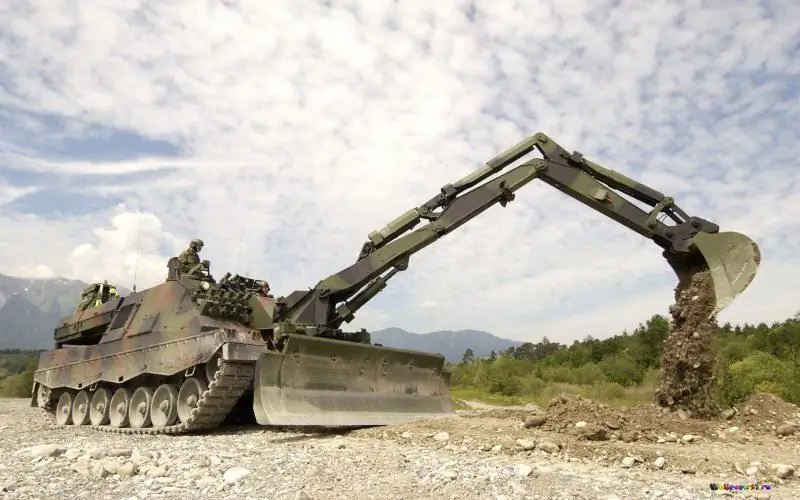
German KODIAK on LEOPARD 2 chassis is a modern example of a combat engineering vehicle
Engineering functions
Engineering functions are categories of related engineering capabilities and actions grouped together to help commanders integrate, synchronize, and direct engineering operations. The three functions are Combat Engineering, General Engineering, and Geospatial Engineering.

British soldiers from the 26th Engineer Battalion, part of the 24th Engineer Regiment, build a newly erected road bridge near the Delhi Operations Base in Afghanistan. Restoration work is vital to improve the quality of life of the Afghan population, especially work on transport arteries that will revitalize trade and improve accessibility to remote areas of the country
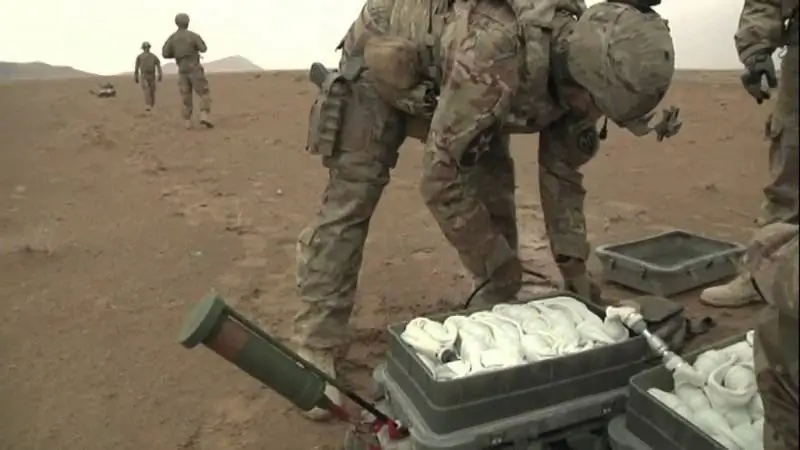
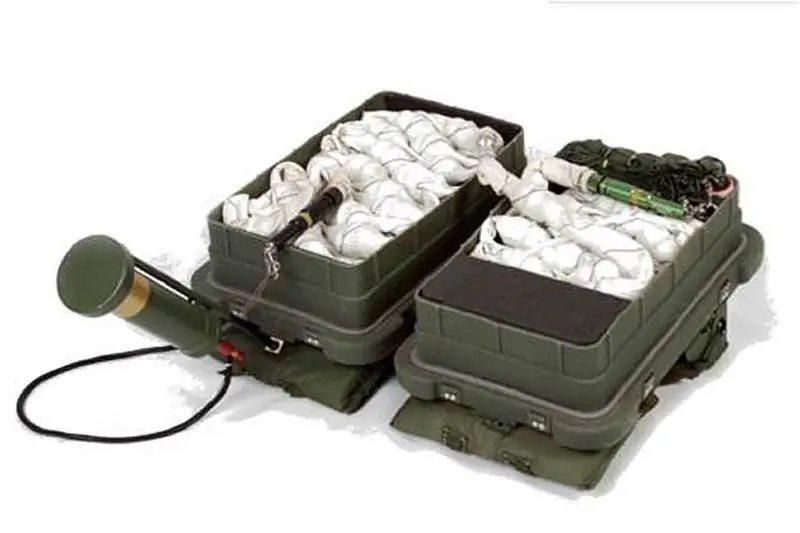
The APOBS (The Anti-Personnel Obstacle Breaching System) is ready for use. APOBS uses a rocket system to deliver 108 series-connected grenades that detonate over a targeted obstacle.
Combat engineering is defined as those engineering capabilities and activities that support the maneuver of ground forces and that require direct support from those troops. Combat Engineering consists of three types of capabilities and jobs: mobility, countermobility, and survivability (M / CM / S).
General engineering activities are defined as those engineering capabilities and activities other than combat engineering that modify, preserve, or protect physical space. Examples include building, repairing, maintaining and maintaining infrastructure, structures, communications lines and bases; protection of natural and cultural resources; terrain change and restoration and certain explosive ordnance disposal works.
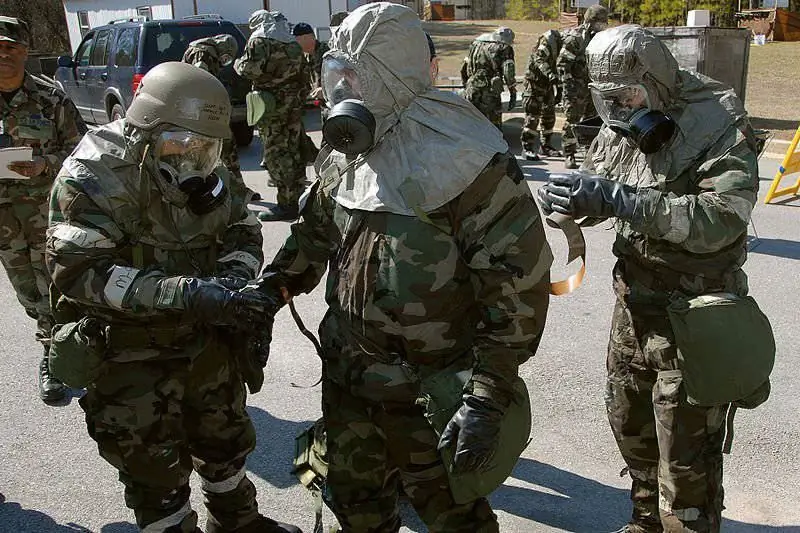
Reconnaissance of suspected contaminated areas requires special equipment and training
Geospatial engineering is the art and science of using geospatial information in order to be able to understand the physical space for military operations. Art is the ability to understand METT-TC (mission, enemy, terrain and weather, troops and support available, time available, and civil considerations) and available geospatial information, including use intent and constraints, in order to assess the military significance of the terrain and create geospatial decision products. This science is the ability to use geospatial information to create spatially accurate products for measurements, mapping, visualization, modeling, and all types of terrain analysis.
Engineering intelligence, although not a separate engineering function, is an important part of each engineering function.
Combat engineering
Combat engineering is integral to the ability of combined arms units to maneuver. It focuses on supporting the melee forces. Combat engineers increase the strength of troops by creating physical space in order to get the most efficient use of the space and time needed to create impact and speed while obstructing enemy maneuvers. By increasing the subunit's ability to maneuver, combat engineers accelerate the concentration of combat assets, increase the speed and pace of troops required to use the enemy's critical vulnerability. By multiplying the natural limitations of physical space, combat engineers limit the enemy's ability to create pace and speed. These restrictions increase the opponent's response time and reduce the physical and psychological will to fight.
Combat Engineering provides engineering support for combat operations (offensive and defensive), stability operations, or assistance to civilians. It can be supplemented from time to time by support for general engineering work, but retains its emphasis on the integrated application of engineering capabilities in order to support the freedom of maneuver of the combined arms unit (mobility and countermobility) and survivability.
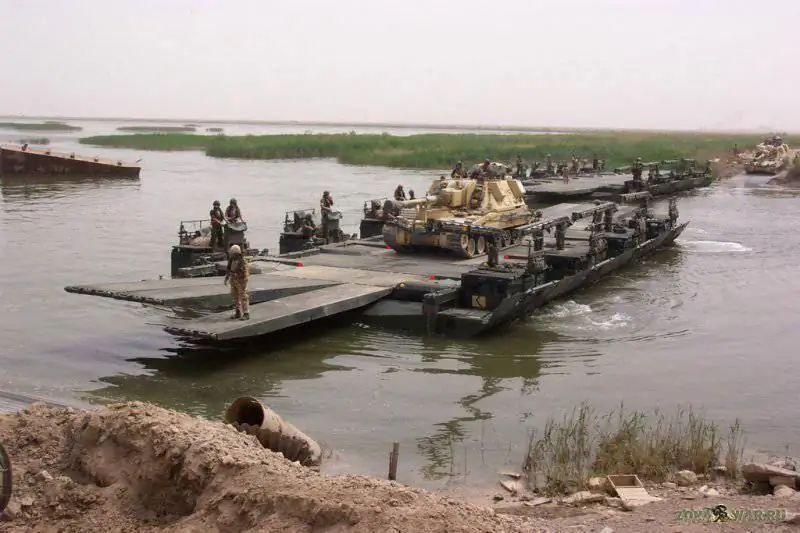
The ferry MZ transports the AS90 self-propelled artillery unit across the river
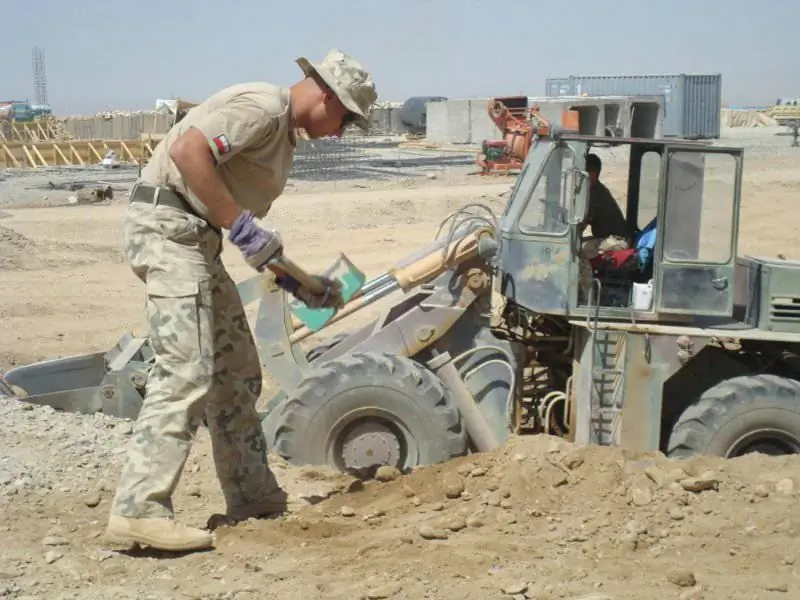
Polish Army Engineers at Work on a Civilian Reconstruction Project in Afghanistan
Mobility
Agile warfare depends on freedom of movement and seeks to avoid the use of force by the enemy in order to focus on his weaknesses as much as possible. The enemy will use firepower, terrain and man-made obstacles to deprive us of our freedom of maneuver. First, their troops will try to bypass such obstacles; however, this may not always be an option. Difficult tasks limiting maneuver must be overcome. In this context, mobile operations are defined as reducing the effectiveness of obstacles by combat and engineering units by reducing or eliminating the impact of existing or fortified obstacles. The goal is to preserve the freedom of movement of combat units, weapons systems and critical stocks.
Making passages, including passages in gates, fences or walls in urban settings and overcoming obstacles, is used to restore the ability to conduct agile combat. Cleanup activities, including the clearing of routes or areas, are used to remove existing or intermittent obstructions. Combat roads and paths provide tactical maneuver, and engineering work on the construction of structures for aviation creates mobile support for tactical maneuvers in the form of GDP, landing areas and facilities for their maintenance.
Mobility operations, the task of combined arms units, uses maneuver as an application of combat power. Operations that support mobility include more than just engineers. For example, ensuring maneuverability and mobility supports those tasks of the military police that will be performed to ensure and maintain the commander's freedom of maneuver and increase the maneuverability of their assets in all environmental conditions. Tasks include route reconnaissance and reconnaissance, regulating and enforcing supply routes, defining temporary routes, ensuring river crossings, and controlling stragglers and refugees. Route reconnaissance is another example.
Countermobility
Counter-mobility work should hinder the enemy's freedom of maneuver through the use of fortified obstacles. Fortified obstacles are a component of terrain strengthening, which includes the development of terrain using obstacles to reduce enemy mobility or increase the survivability of one's forces by building combat positions and shelters.
The main goals of counter-mobility operations are to slow down or deflect the enemy, increase target acquisition time and increase the effectiveness of weapons. Countermobility works include the construction of entry control points and other barriers to deny free access to permanent work sites. The advent of rapidly deployable remotely controlled networking equipment enables effective countermobile operations as part of offensive, defensive and stability operations, and also during the transition between these operations.
Most obstacles have the potential to restrict the freedom of allied forces along with enemy forces. Therefore, it is important that the engineer clearly understands the counter-mobility and limitations of the available engineer troops and carefully weighs the risks of using different types of barriers. The engineer should also plan to clear the barriers when hostilities cease and minimize the impact of the barriers on the civilian population and the environment.

Basic engineering functions and their subgroups
Vitality
Survivability operations are defined as the development and construction of defensive positions such as earthen berms, trenches, shelters from above and counter-surveillance equipment, reducing the effectiveness of enemy weapons.
The concept of survivability in today's combat environment includes all aspects of protecting personnel, military equipment, supplies and information systems while simultaneously misleading the enemy. Survivability considerations apply to support battle positions, outposts, forward operating bases, and in many cases to host country support and other infrastructure. Building combat and defensive positions alone cannot eliminate the vulnerability of personnel and resources. But it, however, limits losses and reduces damage from enemy actions.
The two main factors in the development of defensive combat positions are, firstly, the correct location in relation to the surrounding terrain and, secondly, the most effective use of basic weapons systems, such as anti-tank missiles and weapons served by crews. Defensive positions include, but are not limited to, the construction of communications and command posts, critical equipment (including radars), ammunition and supply depots or temporary storage areas, and other facilities that may be primarily targeted by enemy attacks. It may also be necessary to consider the protection of hazardous materials and fuel depots that pose a threat to personnel if storage containers are damaged or destroyed.
The degree of protection actually provided for these elements is based on the availability of time, weapons and resources. Additional considerations are the likelihood or danger of capture or attack and the estimated risk for each site and structure. Structures emitting a strong electromagnetic signal or significant thermal or visual signatures may require complete protection from potential enemy attacks. Electronic countermeasures and disinformation measures are a mandatory and integral part of planning for all defense activities.
General engineering
General engineering can be performed in support of combat operations, which can create ambiguity in distinguishing between purely combat engineering and general engineering tasks at the tactical level.
General engineering capabilities will usually not be associated with close combat. Excellent at the operational level, general engineering capabilities are applied to establish and maintain the infrastructure needed to support theater operations. At times, a military operation can be expanded with general engineering support to rehabilitate structures, energy systems and life support systems within the infrastructure of the area of operations or to build the technical capacity of the host country.
General engineering is the most diverse of the three engineering functions and usually accounts for the largest proportion of all engineering support provided for an operation. In addition, being conducted throughout the entire combat area, at all levels and performed during all types of military operations, it can occupy all the specialties available in the engineering regiment. General engineering tasks may include the construction and repair of existing logistics facilities, communication lines and other supply routes (including the construction of bridges and roads), airfields, ports, water wells, power plants and distribution substations, fuel and water pipelines, and base camps and camps. recreation. Firefighting and underwater operations are two aspects that can be critical elements for these tasks. General engineering can also be performed through a combination of joint engineering units, civilian contractors and the host country's armed forces or multinational engineering forces. It can also include disaster preparedness planning, response and recovery.
General engineering tasks usually require a large amount of building materials, which must be planned and delivered in a timely manner.
Geospatial engineering
Geospatial engineering is concerned with the generation, management, analysis and distribution of accurate information about the terrain, which is related to some extent to the earth's surface. This activity provides mission-specific data, decision assistance and visualization products that define the nature of the area for the combat commander. Key aspects of the geospatial engineering challenge are databases, analysis, digital products, visualization, and printed maps. Both the in-house and additional geospatial engineering capabilities at the theater, corps, division, and brigade levels are responsible for geospatial engineering.
Geospatial engineering allows the commander and personnel to visualize the combat space by collecting and processing geospatial information and generating images. In addition, geospatial engineering provides the foundational information that enables more efficient and functional solutions to be developed while gaining a faster understanding of the overall combat space at all echelons, thereby conserving an important resource of time.
Geospatial engineering capabilities have received significant improvements based on experience as a result of organizational changes, doctrine updates, technological advances, and necessary practices. Geospatial engineering has the highest temporal and spatial resolutions from additional sensors (sensors) and platforms, which allows for more information and more complex data. New methods and technologies provide additional functionality and the ability to work effectively in a broad coalition of partners and allies.
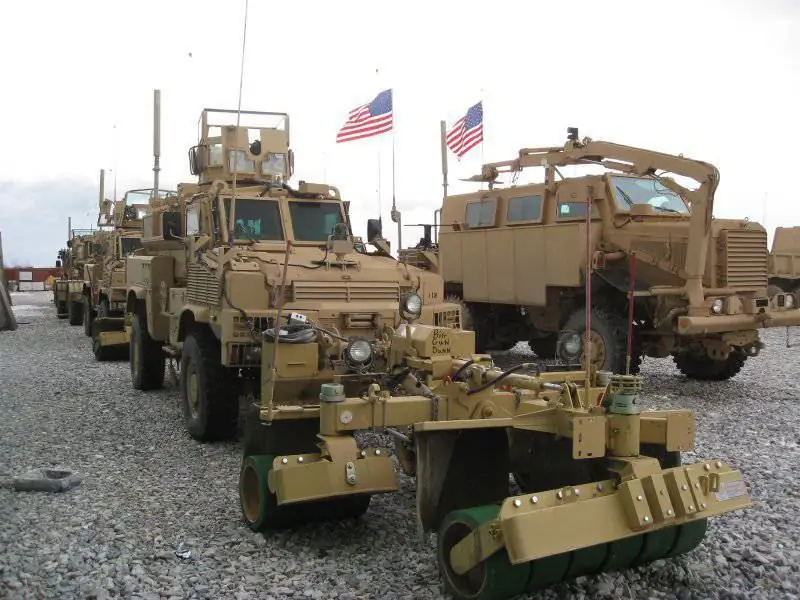
The new US Army SPARK demining system has three rollers to completely cover the entire width of the machine.
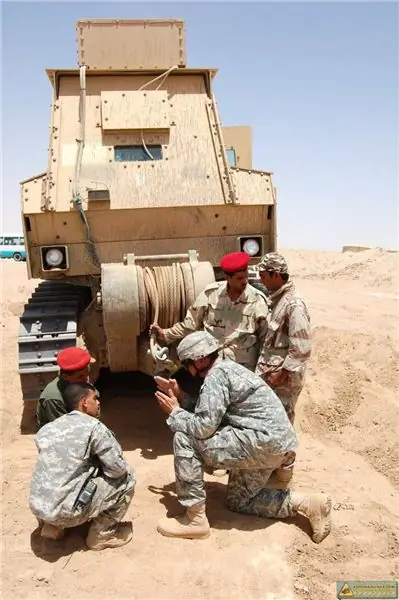
Engineering instructor from the 326th Engineer Battalion trains Iraqi engineers to operate the D7 armored bulldozer
Engineering intelligence
The responsibility for conducting reconnaissance does not fall solely on specially organized units. Each subunit has a prescribed task to report information about the relief, civilian activity, its own and enemy's dispositions, despite its location in the combat area and its main function.
Despite this, and although reconnaissance is mainly based on human resources rather than technical means, the situation may require the collection of technical information at a higher level than that of non-specialized units. For example, an area with suspected contamination of toxic industrial materials by chemical and bacteriological substances should be identified for reconnaissance by units equipped to determine the type and level of the presence of harmful substances. Supporting units (such as engineering, chemical, sapper and military police) have special capabilities to collect technical information that complements the general intelligence work of troops. It is the collection of necessary tactical and technical information that determines the range of engineering reconnaissance capabilities.
Most of the capabilities of tactical engineering reconnaissance allow the collection of technical information to support the function of combat engineering. Reconnaissance in support of mobile, countermobile and stability operations is carried out mainly by an engineering reconnaissance group, consisting of combat engineers and focused on collecting tactical and technical information to ensure the freedom of maneuver and survivability of allied forces and assets. Some specific tasks of engineering intelligence include, but are not limited to:
- Reconnaissance of obstacles, focused on bypassing or passing obstacles to create information about obstacles;
- Route reconnaissance focused on route clearance operations;
- Area reconnaissance focused on explosives such as mines and unexploded ordnance requiring area clearance;
- Reconnaissance of crossing points, focused on determining the requirements to overcome obstacles;
- Route reconnaissance focused on defining combat routes;
- Reconnaissance of obstacles, including the destruction of obstacles, focused on setting up their own obstacles combined with fire.
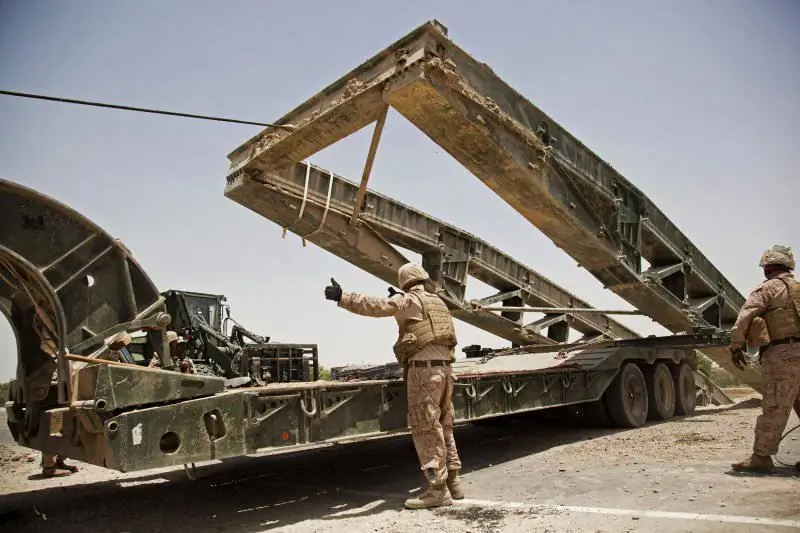
US Marine combat engineers and bridge builders build a girder bridge in the Afghan province of Helmand
Engineering operations
Guaranteed mobility
Guaranteed mobility is the foundation of the processes, actions and capabilities that ensure the ability of a combined force to deploy and maneuver where and when needed, without interruption or delay, in order to accomplish a combat mission. Assured Mobility focuses on proactive mobility and countermobility and integrates all engineering functions to implement it. Guaranteed mobility can be applied at the strategic level (ports, railways and roads), at the operational level (permanent routes and support airfields), and at the tactical level (commander's freedom of maneuver). While the engineer plays the main role in guaranteed mobility, other units and weapons ensure its integration and perform important tasks.
The basic principles of guaranteed mobility are forecasting, detection, prevention, avoidance, neutralization and protection. These principles support the implementation of the concept of guaranteed mobility.
Predict - Engineers and other planners must accurately predict the obstacles to their own mobility by analyzing techniques, methods and techniques, opportunities and development. Forecasting requires a constantly updated understanding of the combat situation.
Define - Using means of reconnaissance, observation and reconnaissance, engineers and other planning services determine the location of natural and artificial obstacles, preparations for the creation and placement of obstacles, and possible means of their creation. They identify real and possible obstacles and suggest options and alternative courses of action in order to minimize or eliminate their possible impact.
Hinder - Engineers and other planners apply these principles to eliminate the enemy's ability to influence mobility. This is complemented by forces acting proactively before the barriers are installed and deployed. This can include aggressive actions to destroy enemy resources and capabilities before they can be used to create barriers.
Avoid - If the obstacle fails, the commander will redeploy his forces to avoid interfering with mobility if this scheme is viable within the maneuver.
Neutralize - Engineers and other planners plan to neutralize, weaken or overcome obstacles and obstacles as quickly as possible to create unlimited maneuvering for the military.
Protect - Engineers and other elements plan and implement survivability and other defenses that will deprive the enemy of the ability to inflict damage, while their own forces make a maneuver. This may include counter-mobility missions to deny the enemy maneuver and provide protection to their troops.
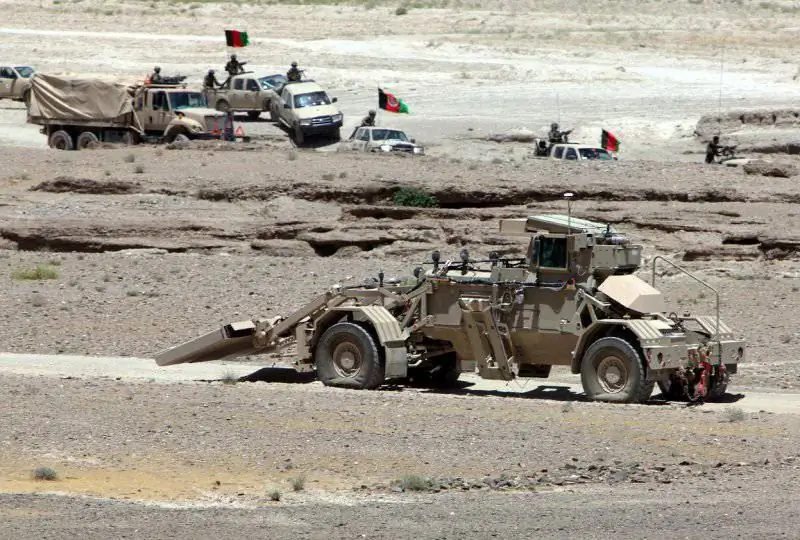
Site Preparation by US Marine Corps Combat Engineers
Engineers in battle
Combat Engineers are at the forefront because they fight alongside mobile units with a focus on close combat. When conducting combat operations, they must be ready to fight and apply their combat experience, using fire and maneuver to complete their engineering mission. On the modern battlefield, the enemy can quickly identify and destroy engineers regardless of their location. As a consequence, all combat engineers are organized, trained, and equipped to fight and destroy the enemy in addition to their primary responsibilities in combat engineering. It can affect engineers in close combat, organized to fight as engineers and organized to fight as infantry.
Fighting as engineers
Combat engineers engage in close combat to complete their combat missions and:
- Provide movement to make contact or attack as part of the maneuver of the military unit in order to fulfill the combat mission of this unit;
- To fight as a force for making passages during such operations of the combined arms forces;
- Facilitate a supported organization to repel a surprise attack;
- Protect an important object, prepared for detonation, through which you can pass as long as your troops are able to withdraw;
- Maintain safety at the work site;
- Protect yourself in the gathering area or on the march.
General and geospatial engineering units are predominantly armed with small arms and have a limited number of weapon systems serviced by crews. They are not organized to move within combined arms formations or use fire and maneuver, but they are able to participate in close combat with fire and maneuver, mainly in a defensive role.
During combat operations, units of combat engineers are task-oriented with mobile units and integrated into combined arms formations. The engineering unit was created to provide destruction, making passes and swift overcoming of obstacles for the combined arms forces. The engineering unit can also use weapons systems for direct fire, contributing to the destruction and passage of obstacles. Regardless of the combat mission, armored engineering vehicles are combat vehicles and thus provide a significant distribution of the combat power of the entire military unit.
When participating in the assault, engineers will fight dismounted at the offensive site. However, they will focus on making passages in nearby defenses, as well as destroying positions and entrenched vehicles. Explosive charges have a significant impact on the defenders and destroy important positions, military property and combat vehicles.
Combat engineers engaged in the destruction of reserve targets in defense mainly carry out the technical procedures necessary to ensure the destruction of the facility. However, the detonation engineering group reacts to contact with the enemy. She helps in organizing the security of the object to ensure its destruction. Corps of Engineers can help defend targets by planting anti-tank and self-destructing anti-personnel mines [the US has not signed an international treaty banning anti-personnel mines] to create a defensive plan.
The combat engineering units involved in the installation of the barriers provide their own local security. To the best of their ability, they use the principles of melee combat against attackers to ensure the completion of the barrage. General and geospatial engineering organizations also provide their own security, but may require support from combat units depending on which war zone they are in. They participate, if necessary, in the defense of the main objects. They set up local defenses and fight from defensive positions around the perimeter. They also form a reaction force that can repel or destroy enemy forces trying to break through the main force formation.
Combat as infantry
When considering the history of the engineer troops, we see that the conduct of combat as an infantry was a secondary task, usually it happened in conjunction with other combat units. The organizational shortcomings include the lack of support for regular fire, communication equipment and medical personnel. If an engineering battalion was destined to fight as an infantry (a maneuverable unit), then it needs the same support and possibly the integration of other combat elements (for example, support by fire and armored vehicles) into its structure to perform a combat mission.
Any commander in command of combat engineers has the authority to use them as infantry, unless otherwise specified. However, the commander must carefully weigh in this case gaining infantry strength against the loss of engineering support. Engineers have much more combat power in their primary combat mission than when they were formed as infantry. Stopping engineering work can reduce the combat power of all combat forces of the commander. Reorganizing engineering units as infantry requires careful consideration and should usually be entrusted to the operational level command.

Royal British Army Engineers Prepare Site for Ebola Treatment Center
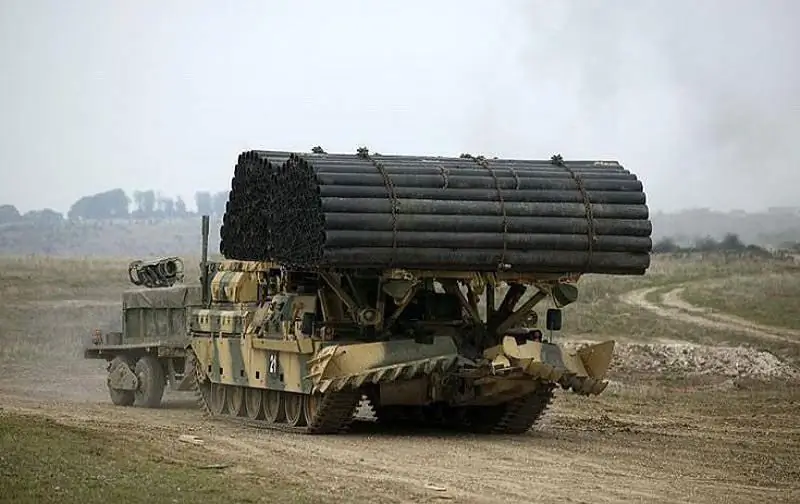
The British Army's new AVRE TROJAN engineering vehicle is pictured carrying fascines. TROJAN is based on the chassis of the CHALLENGER tank, it is designed to clear obstacles and make passages on the battlefield. It can be equipped with a bulldozer for excavation work, a full-size mine plow, and it can also transport fascines and throw them into trenches.
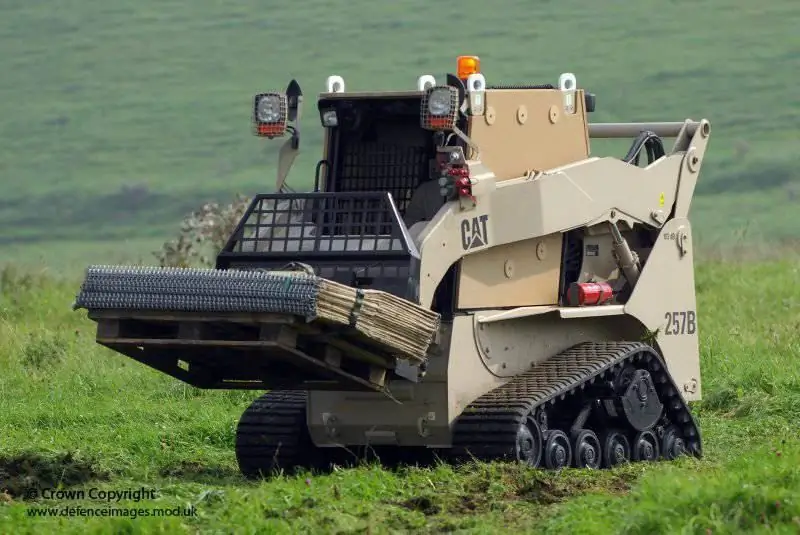
New British Corps of Engineers CAT forklift has been procured under Urgent Operational Relevance (UOR) program for use in Afghanistan
Engineers on the attack
Engineering operations that support offensive actions include the simultaneous use of combat, general and geospatial engineering capabilities through synchronized combat functions and throughout the depth of the combat area. Operations of combat engineers in close support of mobile forces are primarily focused on offensive operations; however, to some extent all three functions are applied simultaneously. The main focus will be to ensure that it helps maneuver and advance.
Combat engineers are preparing to combine their engineering assets with the headquarters they support, focused on the fulfillment of a combat mission. Engineering units establish connections in advance with the mobile units they support. When a unit of combat engineers is ready for offensive operations, they focus on inspection and training of combined arms forces. For the purpose of training the assault forces, combined arms units are organized to overcome obstacles and obstacles.
The building of assault and tactical bridges is moved to the regrouping areas and, if possible, reconnaissance of the crossing points is carried out. Preparation may include the creation of combat routes or forward transport areas. If work is expected to clear the route, then clearance teams are organized and they focus on checks and training of the combined-arms forces. The training of combat engineers takes place in close cooperation and contact with the preparatory work of the mobile forces.
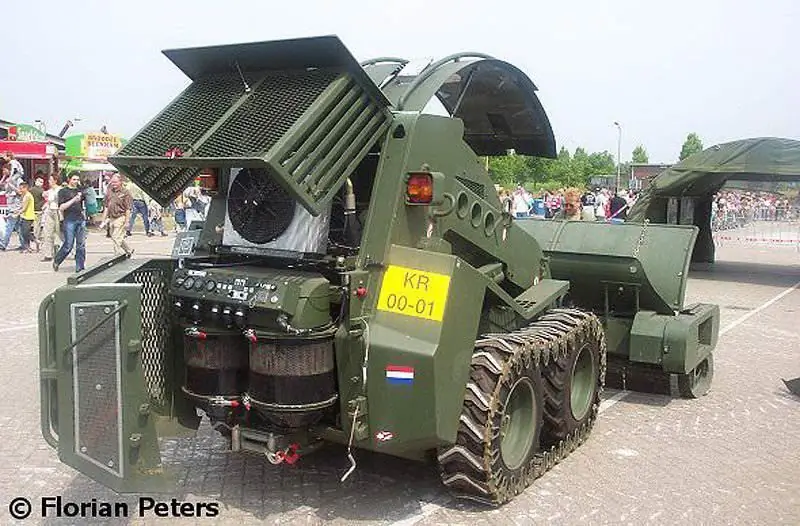
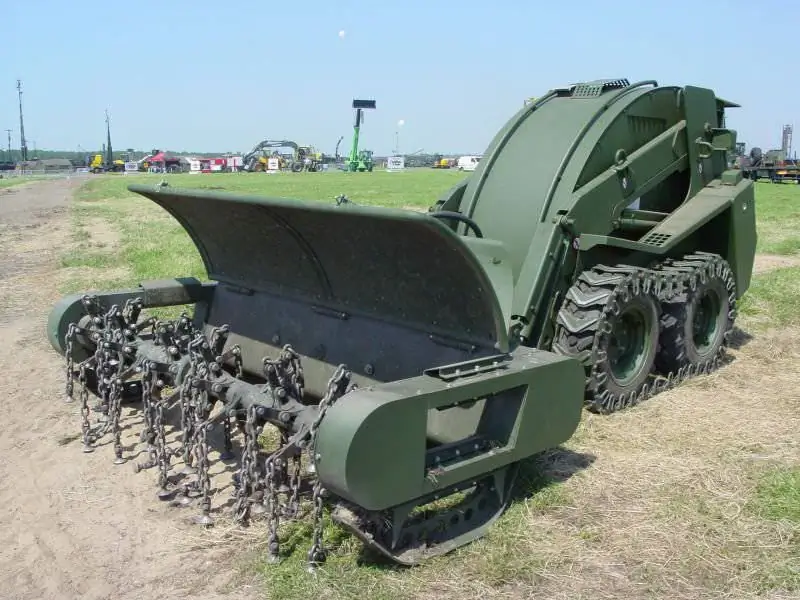
BOZANA 4 is the newest mine clearing machine from Way Industries
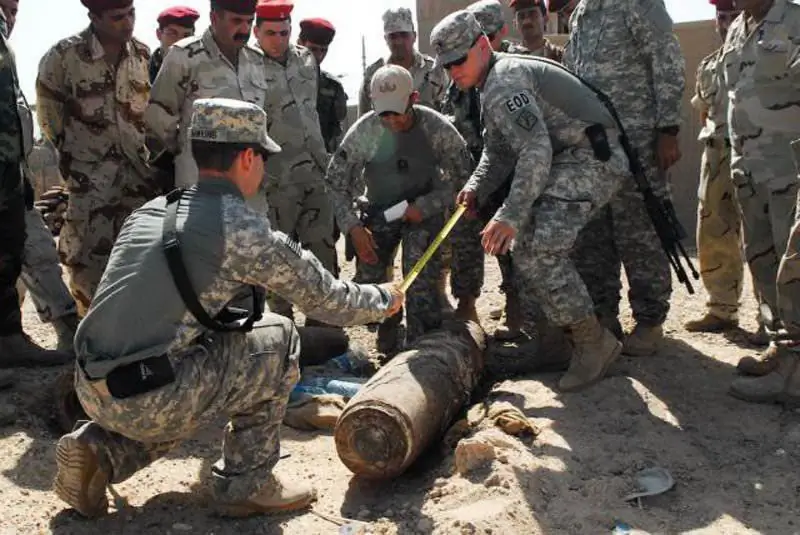
Explosive ordnance demining training for Iraqi army soldiers
With significant volumes of work, preparatory work may require more technical and engineering exploration in order to facilitate appropriate project planning, including the supply of building materials, if necessary. Specialized engineering tools may also be required to complete certain tasks.
At the operational level, general engineering operations cannot be carried out as part of a combined-arms combat mission, but nevertheless must be fully coordinated with the combat commander responsible for the combat area. These general engineering operations are carried out primarily to provide continuous support to combat units, but can be important in preparing an offensive operation.
During offensive operations, the development of combat and defended positions is minimal for combat vehicles and weapons systems, while the emphasis is on troop mobility. Defending and attacking (although rather defensively) may require defended positions for artillery, missile defense and logistic positions. Fixed command and control structures require protection to reduce their vulnerability. During offensive halts, while using the terrain will provide protection, units should create as many defensive positions as possible for major weapon systems, command posts, and critical supplies, based on the unit's threat level and vulnerability. For example, appropriate excavations or parapets are placed to make the best use of existing terrain. During the early planning phases, Terrain Analysis Teams can provide information on ground conditions, vegetation cover, and folds along the route to increase troop survivability. In the scheme of each position, from the very beginning, camouflage must be taken into account and methods of misleading the enemy as far as the situation and time allow.
When performing offensive operations, maneuvering forces will try to avoid encountering obstacles along the paths of the offensive. Maneuvering forces can actively avoid obstacles by opposing the deployment of counter-mobile assets or passively by identifying, marking and bypassing them. This assessment allows you to begin to implement the decisions made in order to pass or bypass the obstacles. Whenever possible, workarounds are preferred and can be passed on to downstream engineering units for further improvement. Likewise, the guidance of assault bridges should be replaced, if possible, by the appropriate guidance of tactical bridges or communication lines, while maintaining the possibility of guidance in the future of assault bridges. In the shortest possible time, the maximum amount of technical level assessments is made in order to identify possible and appropriate improvements to communication lines.
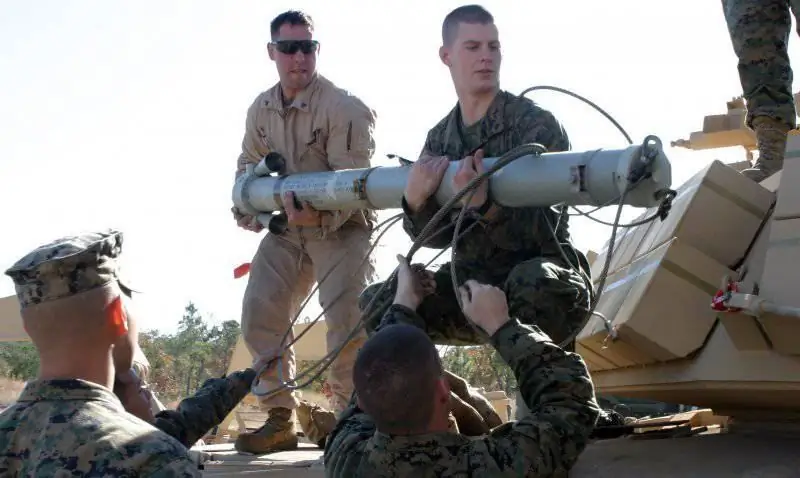
The Marines work with an engineering battalion to install a missile in a new pass-through vehicle (modified ABRAMS chassis). The missile is used to deploy elongated C4 explosive charges, which detonate to detonate all mines and IEDs.
Defense Engineers
Engineering operations supporting a defensive position include the simultaneous use of combat, general and geospatial engineering capabilities through synchronized combat functions and throughout the depth of the combat area. Operations by combat engineers, directly supported by maneuverable forces, are the primary focus of defense operations; however, all three functions are used to some extent at the same time.
In all three types of defensive operations (air defense, mobile defense and retreat), the main focus for combat engineers is to engage the integration of combined arms obstacles (countermobility) and guarantee the mobility of their counterattacking or repositioning forces.
The work includes the construction of positions to increase the survivability of command posts, artillery, air defense systems and weapons and reserves as well as the preparation of individual and crew-serviced combat positions and shelters and positions using terrain features for combat vehicles. Use engineering schedules and make extensive use of earthmoving equipment. During this period, countermobility efforts will compete with resources and survivability. Therefore, it is important that agile commanders provide clear guidance on resources and job priorities.
General engineering support performs tasks that exceed the capabilities of the combat engineering forces, and also provides broader support for the mobility of reversing counterattacking forces. Examples of intended combat missions include: building and integrating fences and barriers; preparation of combat positions and positions that increase survivability in depth; the construction and maintenance of routes that facilitate the redeployment of forces throughout the war zone. Designated combat engineers combine and provide mobile support for the reserve or mobile strike force. The means of collecting information, reconnaissance and reconnaissance determine the capabilities of the enemy's engineering forces (primarily the means of creating passages, overcoming obstacles and countermobility) in order to propose them to the list of objects before attacking the target and to ensure their timely destruction. At the operational level, general engineering operations to strengthen and prepare defended positions for structures and military bases will be ongoing. Operational level barriers and barriers may also be needed as part of providing countermobility.

Soldiers from the topographic group of the 94th Engineering Battalion of the US Army are surveying the area at an operational base in Iraq. The data the group collects will be used in military and civilian maps
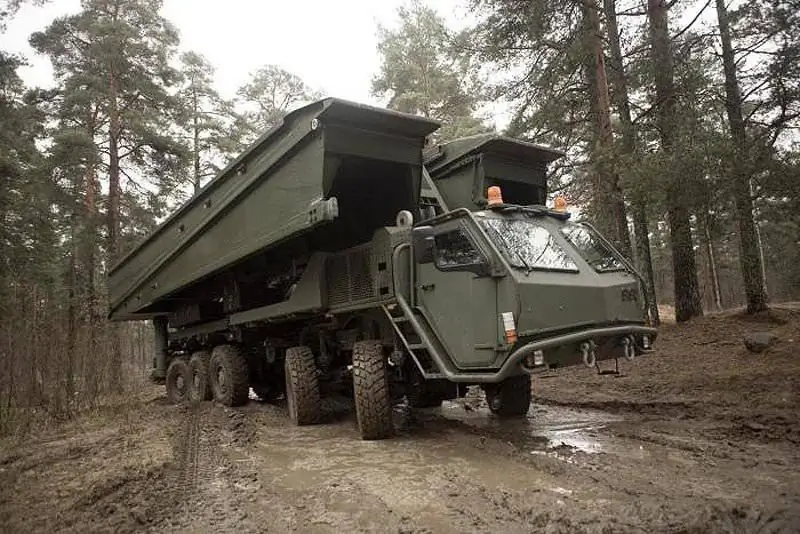
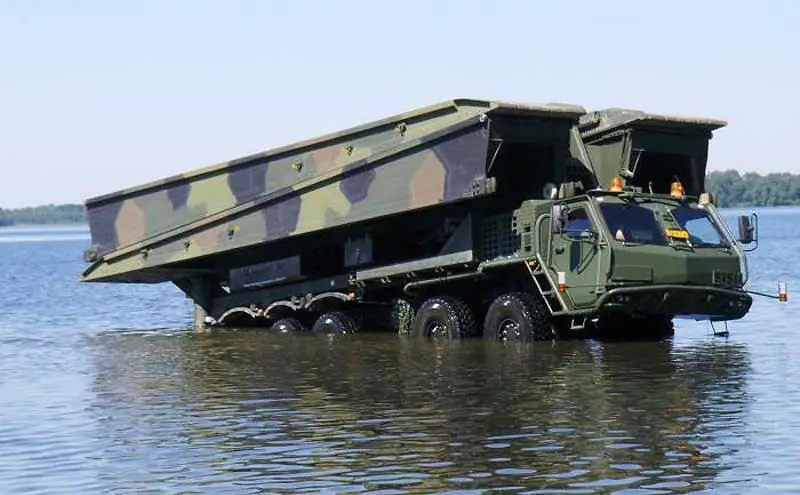
Finnish army bought nine LEGUAN axle wheeled bridges on SISU E15TP 10x10 chassis
Engineers in stabilization operations
Stabilization operations include both coercive and constructive warfare. They are designed to create a safe and secure space and facilitate interaction between local and regional adversaries.
Engineering support for stability operations includes the simultaneous use of combat, general and geospatial engineering capabilities through synchronized combat functions and throughout the depth of the combat area. General engineering operations for the restoration of essential services and infrastructure development are the main engineering business in stabilization operations; however, all three functions can be used simultaneously to a certain extent.
Often, stabilization operations are needed to meet the basic needs of the population. The engineering force can be an important tool for providing essential services as long as the host government or other organizations can perform the same functions. Engineering tasks are mainly focused on renovation or building infrastructure to create the basic services that provide the population. This work is usually carried out in cooperation with civilian organizations and in addition to the rest of the engineering support of its own forces. The provision for infrastructure development can be expanded to help the host country develop.
Basic services in terms of engineering forces include food and water, emergency shelter and basic sanitation (removal of debris and sewage). Perhaps engineering tasks are similar to tasks that are required with the assistance of civilian authorities (see below), the only difference is that they are carried out overseas.
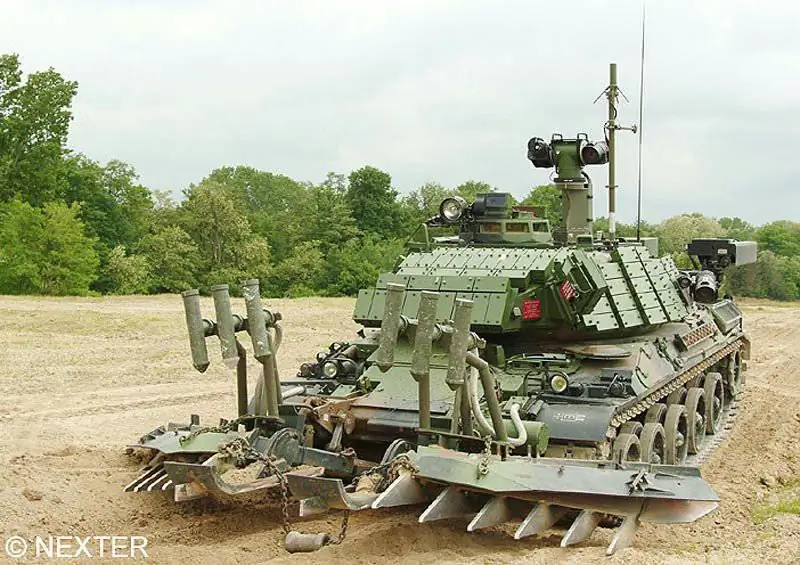
The sophisticated modular mine clearance vehicle developed by Nexter for the French army is based on a remote controlled mine clearance vehicle based on the AMX-30 tank chassis. Three of these vehicles are remotely controlled from a control station in the VAB command vehicle.
Engineers in Civilian Assistance Operations
Civilian support includes operations directed at natural or man-made disasters, incidents and events. Military forces conduct civilian assistance operations when the size and scope of a disaster exceeds the capacity and capacity of local civilian authorities. Army operations to assist civilian authorities consist of three main tasks: providing support in the aftermath of disasters; support for civil law enforcement; and providing other assistance as needed.
General engineering support for the restoration of essential services is the main goal of engineers in assisting civilians. Engineering support may also be required for the ground forces to provide command and control, the stability and protection of government organizations at all levels until they can function normally. Basic engineering work related to the provision includes rescue work, food and water, emergency shelter, basic sanitary work (garbage collection and sewage) and minimal restriction of access to the affected areas. Combat and general engineering capabilities can be used to restore basic services. Engineering equipment is also well suited for clearing rocks and debris in hazardous areas.
Engineers and explosive ordnance disposal
Several allied countries (for example, Britain, France, Canada and Australia) are teaching EOD (Explosive Ordnance Disposal) techniques in addition to training combat engineers; Rather, the US military views engineers and explosive ordnance disposal as two different services and organizations. Each role is unique but similar and necessitates close coordination when working in a modern combat space.
Engineers are responsible for ensuring the mobility of combat forces, detecting and neutralizing mines in three ways: mine detection, neutralization by detonation, and "gross neutralization". Detection technologies focus on identifying metal parts of mines. In explosive neutralization, for demining, for example, elongated charges are used to detonate mines. In "rough" neutralization, plows and rollers are used to push mines to the sides or detonate them due to pressure. All of these methods require sources of intelligence and reconnaissance to locate mines, and then use an appropriate combination of charges or "direct impact" means to neutralize and penetrate conventional minefields. Explosives and "gross" neutralization cannot be used in some operations, such as in urban areas.
EOD personnel can be organized directly into mobile units to neutralize booby traps, unexploded ordnance and IEDs. Boosts have increased their "intelligence" in recent years and may have electronic circuits including light, motion and detonation sensors on command.






